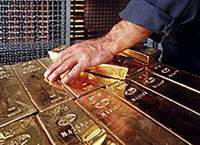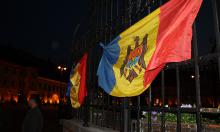Russia’s gold and currency reserves hit a record high
Russia's gold and currency reserves soar for the second week in a row. According to a statement issued by the Central Bank on Thursday, the reserves hit a new record high of $225.7 billion as at April 28, up by $8.6 billion on the previous week's figures. It is the highest one-week rise in the Central Bank’s gold and foreign exchange reserves since January 28, 2005, or for 15 months.

The new rise has enabled Russia to outdo South Korea with its $217.3 billion in terms of gold and currency reserves. Russia now ranks fourth for the reserves after Taiwan (third place with $275 billion). Most analysts indicate Russia could catch up with Taiwan and surpass it should the reserves continue growing at a current rate. Taiwan’s reserves also grow but not at such a high rate.
It is obvious that the dramatic rise in Russia’s gold and currency reserves is caused not only by an increasingly steady influx of petrodollars into Russia. Analysts believe the Central Bank’s intensive dollar acquisition policy is one of the reasons behind the latest surge. The Central Bank took steps to prevent the ruble from further strengthening against the dollar as Russians kept selling the weak greenback. Under the circumstances, the Central Bank could not but actively buy the U.S. currency.
Despite looking set to outstrip Taiwan with regard to gold and currency reserves, Russia is unlikely to climb another step and outpace China (first place with $876 billion) and Japan (second place with $852 billion) in the near future.
Analysts’ views as to Russia’s rapid reserves growth vary.
According to Natalya Volochkova, a chief economist at the Center of Economic and Financial Studies and Projects, these days the Central Bank is trying to tackle two problems at a time, and the job does not look feasible at all. The Central Bank wants to keep inflation low while taking steps to make the economy more competitive. “Saying that we can resolve these problems by maintaining the exchange rate of the dollar is a wee bit of exaggeration, to put it mildly,” says Volochkova. “The job could be done of a productivity rate of Russian companies were at least comparable to that of Western or Asian companies. But we are falling behind by hundreds of percent with regard to that indicator. Today the Central Bank is building a “shield” for our companies by buying U.S. dollars on the Russian market. The measures keep the selling price of companies’ goods high yet they fail to encourage productivity,” says Volochkova.
In the meantime, chief economist of the financial company Uralsib Vladimir Tikhomirov has a different view on the development: “I believe the Central Bank is now pursuing a pretty sound policy aimed at protecting the national economy from foreign competitors. Otherwise Russian companies would simply crumble due to aggressive imports the way it happened in the mid-1990s. And the larger part of profits would flee the country too,” says Tikhomirov.
At the moment there are no indications whatsoever that Russia’s Central Bank intends to stop buying dollars en masse in the near future. In other words, Russia will continue to run a race with the world’s leaders in the amount of gold and currency reserves.
Nezavisimaya Gazeta
Translated by Guerman Grachev
Pravda.Ru
Discuss this article on Pravda.Ru English Forum
Subscribe to Pravda.Ru Telegram channel, Facebook, RSS!




